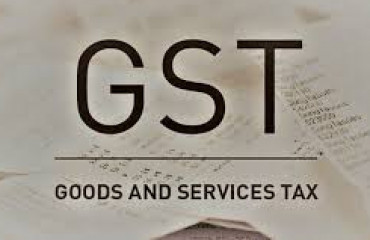
NEW DELHI : The 15th Finance Commission’s recommendation to revise goods and services tax (GST) rates and slab structure to improve revenue collection is a medium-term goal, N.K. Singh, who chaired the commission, said, adding it is best done when economic growth is more robust.
NEW DELHI : The 15th Finance Commission's recommendation to revise goods and services tax (GST) rates and slab structure to improve revenue collection is a medium-term goal, N.K. Singh, who chaired the commission, said, adding it is best done when economic growth is more robust.
The commission's report submitted in October 2020 on fiscal affairs of the Centre and states for the 2021-26 period is the basis for the ongoing deliberations within GST Council for rationalizing the rate and slab structure.
In an interview, Singh said the issue of restoring GST revenue neutrality—that is, collecting the same amount of revenue before and after the GST roll-out from the items covered by the new tax system—was part of FFC's recommendations which are "medium-term" in nature. FFC had noted that multiple GST rate cuts had compromised GST's revenue neutrality and the tax revenues of the Centre and states from items covered by GST declined as a share of GDP after the 2017 tax reform.
"It (restoring GST's revenue neutrality) should be taken up at the appropriate time, perhaps when the economic growth momentum has picked up further and is more robust; I am not suggesting immediately. It is to be done over a period of time, depending on the stability of the higher growth we are expecting in the upturn. The timing is left to the GST Council," Singh said.
Singh's support for a gradual calibration of the GST rate structure is significant as some of India's economic parameters have thrown up a challenge to raising rates. Inflation touched 6.95% in March, posing a threat to growth and forcing RBI to lower its growth forecast for FY23 to 7.2% from 7.8% earlier. Meanwhile, consumer demand is still to take off significantly. The central bank flagged earlier this month that private final consumption expenditure in FY22 was just 1.6% over the pre-pandemic level of FY20. Against this backdrop, policymakers may find it hard to justify higher taxes on consumption, which may end up hurting consumer sentiment. Also, due to a host of administrative efficiency building measures and economic recovery, GST receipts have already hit an all-time high of ₹1.42 trillion in March, easing some of the fiscal concerns of states.
An email sent to the finance ministry and the GST Council secretariat on Tuesday remained unanswered at the time of publishing.
The Centre, however, is sympathetic to states' revenue needs and has already put in place a liquidity arrangement suggested by the FFC to ensure that the shortfall in GST compensation payout does not affect their budgets.
"The (central) government is not resiling on any of its obligations," Singh said. FFC had recommended that states' GST compensation be fully paid, GST cess may be extended till FY26, and an interim liquidity arrangement be put in place for states by way of borrowings either by the Union or by the states.
The Centre had already borrowed ₹2.69 trillion and transferred it to states for FY21 and FY22 to meet the shortfall in GST compensation. This debt will be serviced by GST cess collection, which the Council has extended till FY26.
Whatever is the Centre's liability for the period when the compensation for five years has not been fully paid due to sluggish revenue collection (but interim liquidity provided by the Centre) will be fully extinguished over the Finance Commission award period. That should not be a problem since revenues are doing well, explained Singh.
A ministerial committee, led by Karnataka chief minister Basavaraj Bommai and appointed by the GST Council, is currently examining further rationalization of GST rates. The Council is expected to meet once the recommendations are given.
